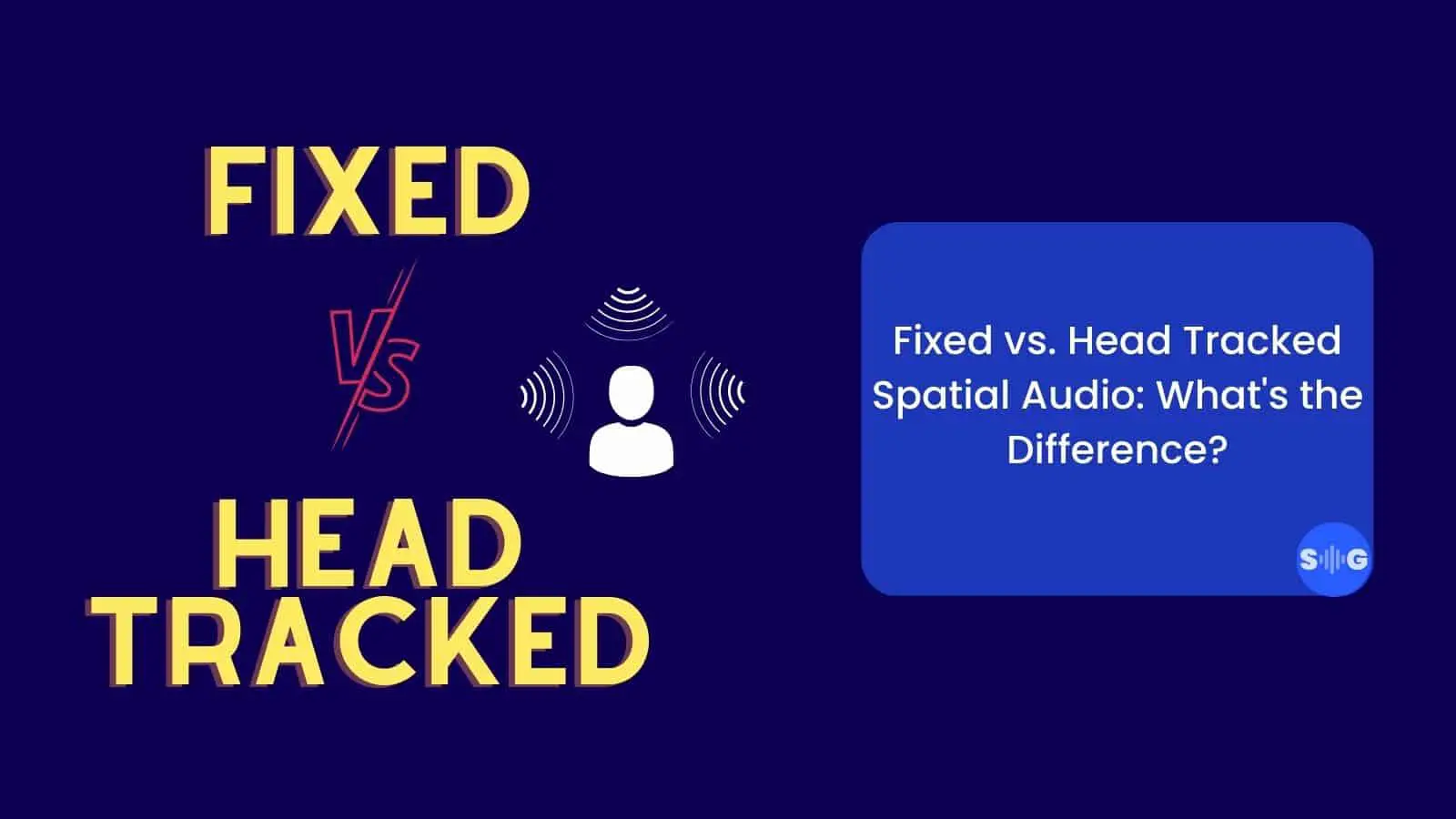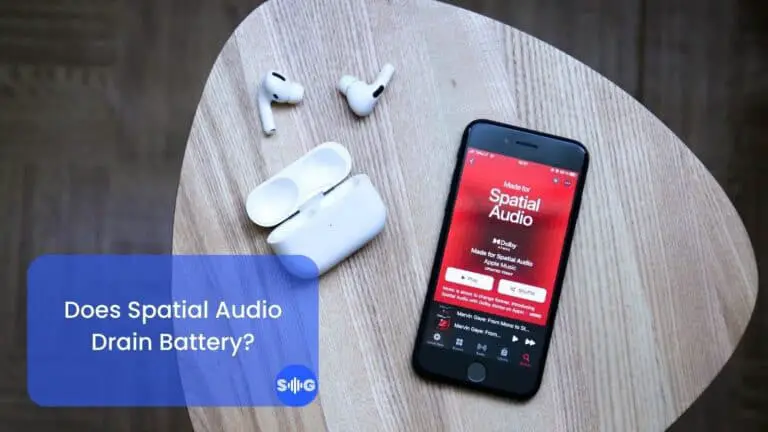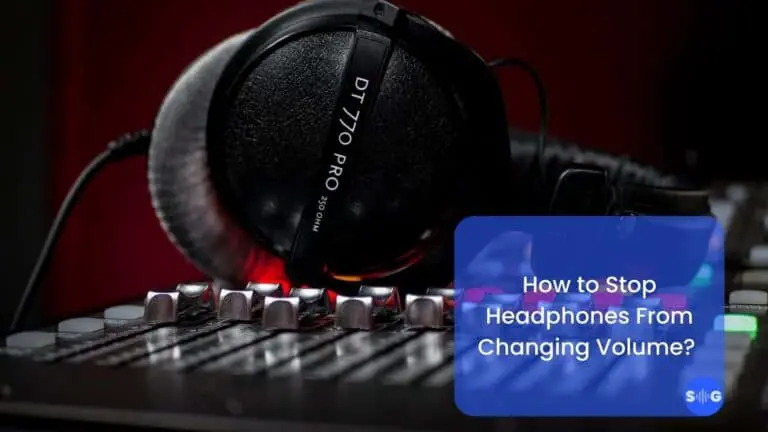Fixed vs. Head Tracked Spatial Audio: What’s the Difference?
This post may contain affiliate links, and we will be compensated if you buy after clicking on our links. Learn More
Spatial audio is an exciting technology that is improving rapidly. The way audio devices project sound and how we perceive sound through them is constantly improving. Fixed and head-tracked spatial audio are common forms of spatial audio, but what is the difference between them, and which is generally better?
Fixed spatial audio turns stereo audio into surround sound but is not dynamic and does not adjust to where your ears are in 3D space.
Head-tracked spatial audio tracks where your ears are and move the location of sounds in relation to where you are, keeping them in a fixed point in 3D space. This tracking for spatial audio can enhance the listening experience by creating a more natural and immersive soundstage, making it feel like the sound is coming from all around you instead of just from the device itself.
The differences between fixed and head-tracked spatial audio become quickly apparent when you compare both audio types side-by-side. Here we will take the time to properly compare these two types of audio output, identify their differences and similarities, and help determine which will provide a better audio experience for you.

What Does Head Tracked Mean on AirPods?
Head tracked is a feature on your AirPods that enhances the listening experience by creating a more immersive audio environment.
With the introduction of spatial audio and head tracking, AirPods can now deliver a virtual 3D sound space that moves according to your head movements. This feature is particularly useful when watching movies or consuming other content that benefits from a 3D audio experience.
When head tracking for spatial audio is enabled, your AirPods use built-in motion sensors to track the orientation of your head. This information is then combined with the data from your device’s sensors to dynamically adjust audio output. As a result, the virtual sound sources appear to remain fixed in their positions, even when you move your head.
Fixed Vs. Head Tracked Spatial Audio
Spatial audio is an excellent audio technology that makes audio from almost any source far more immersive, enjoyable, and realistic and can even improve the fidelity of the audio in the right circumstance.
Most forms of spatial audio are known as “fixed” spatial audio, but recent years have seen the development of “head-tracked” spatial audio, and it is crucial to understand the differences between the two audio types when comparing them and when choosing audio devices.
Fixed spatial audio is exactly what it sounds like. The spatial audio is fixed in place and is not dynamic regarding movement within 3D space.
This means that when you listen to fixed spatial audio, the sounds will always come from the same direction in relation to where your head is, regardless of where you move in 3D space.
Head-tracking for spatial audio can dynamically adapt to where your head is in 3D space and adjust the direction of the audio accordingly.
This form of spatial audio uses spatial-awareness technology to determine where your ears are in 3D space and adjusts the audio you hear based on where it is in relation to your ears.
For example, if you imagine listening to a sound source on your left-hand side, and you turn around, the sound will then be on your right-hand side. When using fixed spatial audio, the sound source turns with you when you turn, and the source always remains on your left-hand side.
However, with head-tracked spatial audio, the sound remains in the same place, and the source moves to your right-hand side when you move, just as it would if you hear the sound in person.
Is Head-Tracked Spatial Audio Better?
Spatial audio completely changes the experience of audio. This tech can be used for video games, music, movies, shows, videos, and even audiobooks with audio effects. All forms of spatial audio improve most audio experiences, but is head-tracked spatial audio better than standard or fixed spatial audio?
Head-tracked spatial audio can significantly improve audio immersion and enhance audio’s overall experience, provided it is compatible with this audio format.
Some people find head-tracked spatial audio to be disorientating, which can sometimes be confusing. However, when using head-tracked spatial audio, the audio itself is fully immersive; it sounds like it is coming from all around you and feels as if you are entirely surrounded by sound.
This experience is truly special and cannot be replicated in any other digital format.
Not all spatial audio systems can achieve head-tracked spatial audio, and it usually requires the use of high-end wireless earbuds to achieve, but there is no other digital audio experience that is more immersive, realistic, or impressive than head-tracked spatial audio.
Head-tracked spatial audio is better than fixed spatial audio so long as it does not make you uncomfortable. All forms of spatial audio are usually better for immersion and experience than stereo audio, and head-tracked spatial audio is the best form of spatial audio.
Is Fixed Or Head Tracked Spatial Audio More Reliable?
Fixed and head-tracked spatial audio digitally recreates sound in 3D space, and therefore both process sound before it is played in your ears.
This means that the audio the software processes should ideally be made for this type of audio processing or at least be compatible with the software.
The reality is that fixed spatial audio is better at generating spatial audio from stereo audio than head-tracked spatial audio is.
Head-tracked spatial audio only works on content designed for this audio form, but fixed spatial audio does an excellent job of recreating the audio in 3D space, even though it cannot move the digital sound source in relation to your head.
This means that fixed spatial audio is more reliable and consistent than head-tracked spatial audio and is more readily available.
Audio that is made and mixed with spatial audio in mind is far better than stereo audio when using spatial audio technology, but fixed spatial audio software is far better at processing stereo audio than head-tracked spatial audio is.
Which Spatial Audio Should You Use?
Fixed and head-tracked spatial audio is becoming more readily available for everyone, but the trouble is that only specific devices can produce this type of audio. If you are looking for a spatial audio-capable headset or earbuds, should you buy a set that can do both forms of the spatial audio, or is it better to get a headset that can perform one form of spatial audio?
Fixed spatial audio is easily accessible through programs that can be bought and used with any pair of soundstage headphones. However, head-tracked spatial audio is only compatible with headphones or earbuds that can track the position of your ears in 3D space.
This means that they are generally much more expensive and they are more difficult to come by.
If you want to experience spatial audio, it is best first to try it with a downloadable program on your computer and then determine if you want to upgrade to head-tracked spatial audio.
If you want to move up to head-tracked audio, you will need to invest in the more expensive devices on the market.
If you only want to experience spatial audio in 3D space for gaming, watching movies and shows, or for general content, then fixed spatial audio is usually more than enough.
However, if you want to move around and experience audio in 3D space, then head-tracked spatial audio is an experience like no other, and this audio format is best for you.
Take the time to research both forms of spatial audio to determine which appeals to you more, and make the decision based on the form of audio that you like to listen to the most.
Not everyone feels good when using head-tracked spatial audio, especially people who experience vertigo or who become nauseous easily. if this describes you, then it is always better to use fixed spatial audio over head-tracked audio.
Conclusion
Spatial audio is excellent and can significantly improve audio in every way. Fixed and head-tracked spatial audio are both very immersive and effective, but head-tracking for spatial audio is the superior version of this audio in most instances.
With that said, fixed spatial audio is more reliable and consistent and has a much lower barrier to entry. Both forms of spatial audio are a great experience, but the head-tracked version creates a better feeling of immersion.
Want to know more? Check out our takes on spatial audio say not playing, does spatial audio drain battery, and spatial audio greyed out.
References
Control Spatial Audio and head tracking
What Is Spatial Audio for AirPods? How It Works and What It Sounds Like
What is the difference between fixed and head tracked spatial audio on AirPods Pro?

John Wilson
As a writer and passionate music lover, I write and contribute to many interesting things, especially audio equipment. I have a unique perspective and often write about things that nobody else does. This makes me a great resource for anyone looking for new and exciting information. I hope that my writing can be a source of inspiration for you.

John Wilson
As a writer and passionate music lover, I write and contribute to many interesting things, especially audio equipment. I have a unique perspective and often write about things that nobody else does. This makes me a great resource for anyone looking for new and exciting information. I hope that my writing can be a source of inspiration for you.





